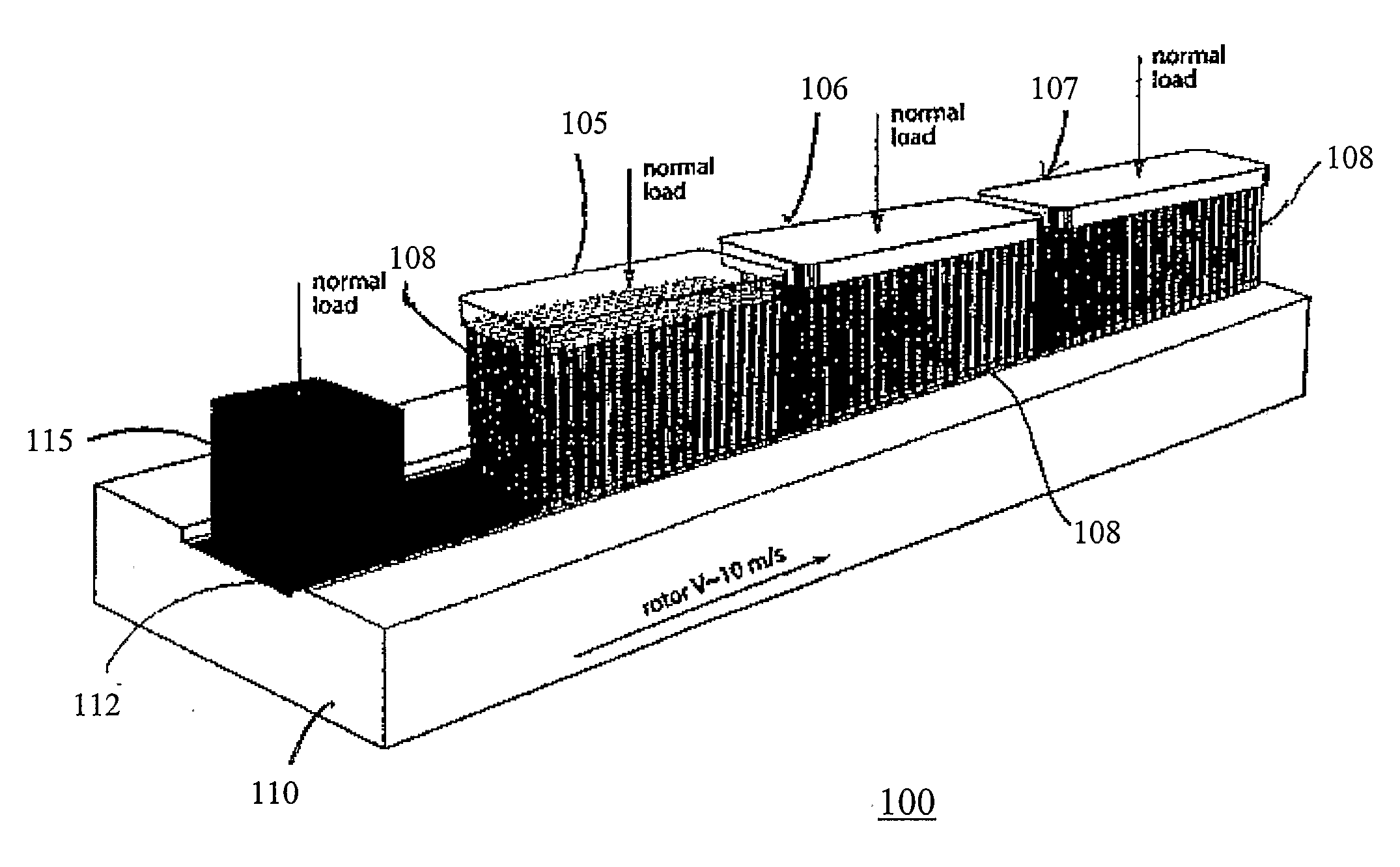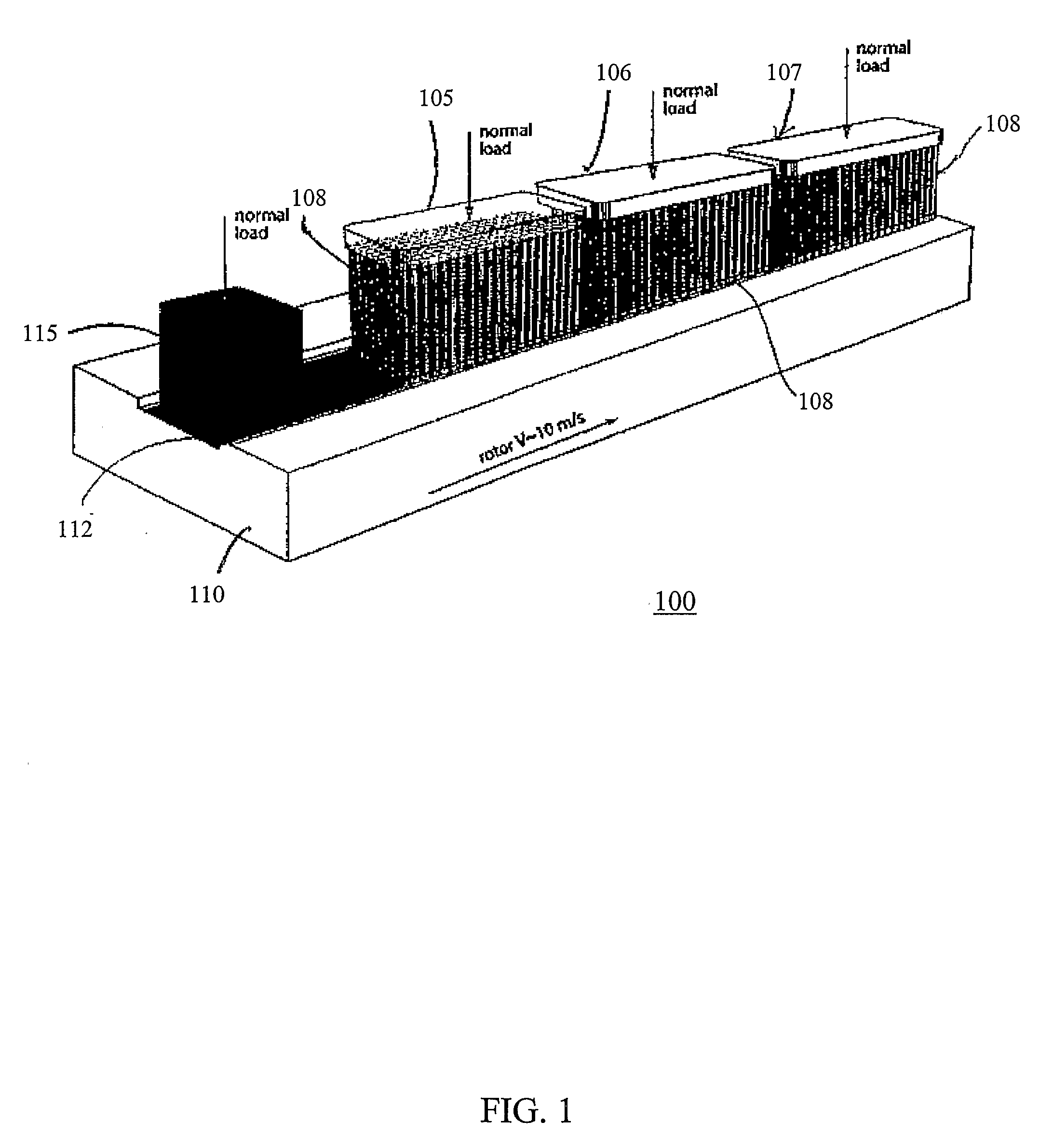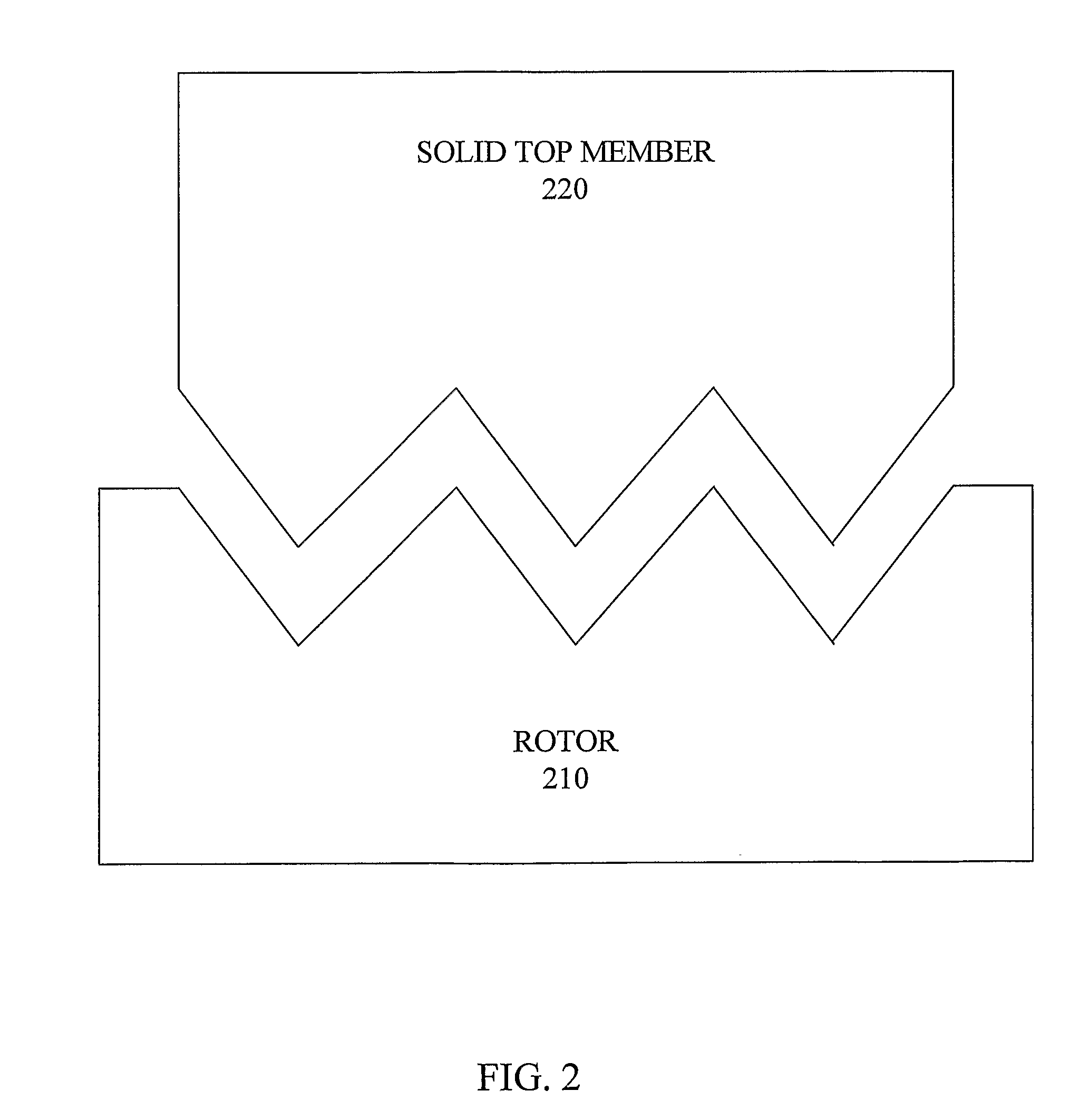In-Situ Lubrication of Sliding Electrical Contacts
a technology of electrical contacts and in-situ lubrication, which is applied in the direction of lubricant compositions, petroleum industry, base materials, etc., can solve the problems of affecting the development of a superconducting homopolar motor (schpm) for ship propulsion, affecting the minimum required wear length of brushes, and generally providing insufficient wear protection for some important applications
- Summary
- Abstract
- Description
- Claims
- Application Information
AI Technical Summary
Benefits of technology
Problems solved by technology
Method used
Image
Examples
example
[0027]The present invention is further illustrated by the following example. The example, however, is only for the purpose of illustrating aspects of the invention and should not be construed as limiting the scope or content of the invention in any way.
[0028]Referring to FIGS. 3A and 3B, a demonstration of the in situ solid lubrication of self-mated copper contacts was performed on a high-speed rotating pin-on-disk tribometer. The experimental setup is illustrated in FIG. 3A. Corresponding results are presented graphically in FIG. 3B. The copper disk 302 shown was sanded to an initial surface roughness of Ra˜0.15 μm and had a diameter of approximately 50 mm. The copper pin 304 had a diameter of approximately 6 mm and was loaded against the copper disk 302 by a dead weight load of 5N. The disk 302 was rotated at a constant angular speed resulting in a sliding speed at the contact of 1.5 m / s. The solid lubricant pin 306 was unloaded and could be manually brought into contact as needed...
PUM
| Property | Measurement | Unit |
|---|---|---|
| contact forces | aaaaa | aaaaa |
| thick | aaaaa | aaaaa |
| diameter | aaaaa | aaaaa |
Abstract
Description
Claims
Application Information
 Login to View More
Login to View More - R&D
- Intellectual Property
- Life Sciences
- Materials
- Tech Scout
- Unparalleled Data Quality
- Higher Quality Content
- 60% Fewer Hallucinations
Browse by: Latest US Patents, China's latest patents, Technical Efficacy Thesaurus, Application Domain, Technology Topic, Popular Technical Reports.
© 2025 PatSnap. All rights reserved.Legal|Privacy policy|Modern Slavery Act Transparency Statement|Sitemap|About US| Contact US: help@patsnap.com



